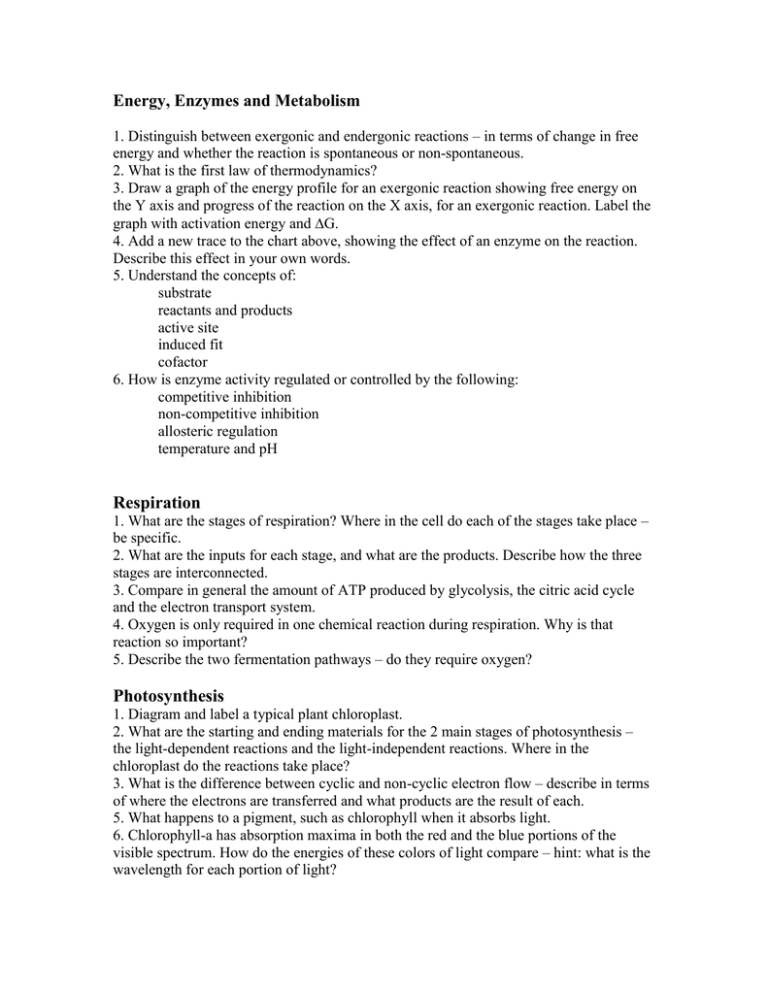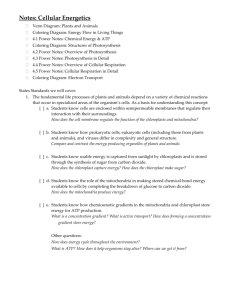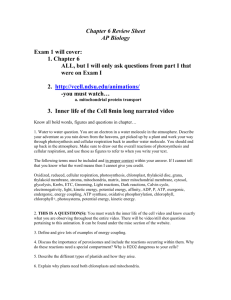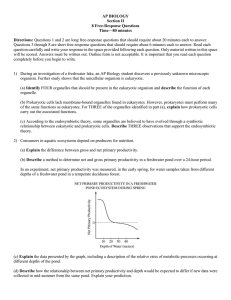Energy, Enzymes and Metabolism
advertisement

Energy, Enzymes and Metabolism 1. Distinguish between exergonic and endergonic reactions – in terms of change in free energy and whether the reaction is spontaneous or non-spontaneous. 2. What is the first law of thermodynamics? 3. Draw a graph of the energy profile for an exergonic reaction showing free energy on the Y axis and progress of the reaction on the X axis, for an exergonic reaction. Label the graph with activation energy and G. 4. Add a new trace to the chart above, showing the effect of an enzyme on the reaction. Describe this effect in your own words. 5. Understand the concepts of: substrate reactants and products active site induced fit cofactor 6. How is enzyme activity regulated or controlled by the following: competitive inhibition non-competitive inhibition allosteric regulation temperature and pH Respiration 1. What are the stages of respiration? Where in the cell do each of the stages take place – be specific. 2. What are the inputs for each stage, and what are the products. Describe how the three stages are interconnected. 3. Compare in general the amount of ATP produced by glycolysis, the citric acid cycle and the electron transport system. 4. Oxygen is only required in one chemical reaction during respiration. Why is that reaction so important? 5. Describe the two fermentation pathways – do they require oxygen? Photosynthesis 1. Diagram and label a typical plant chloroplast. 2. What are the starting and ending materials for the 2 main stages of photosynthesis – the light-dependent reactions and the light-independent reactions. Where in the chloroplast do the reactions take place? 3. What is the difference between cyclic and non-cyclic electron flow – describe in terms of where the electrons are transferred and what products are the result of each. 5. What happens to a pigment, such as chlorophyll when it absorbs light. 6. Chlorophyll-a has absorption maxima in both the red and the blue portions of the visible spectrum. How do the energies of these colors of light compare – hint: what is the wavelength for each portion of light? 8. What evolutionary, adaptive advantage do C4 and CAM plants have with regard to photosynthesis? Why are such plants less frequently found in environments where there is an adequate water supply? 9. Compare/contrast Mitochondria and Chloroplasts - One specific reaction or process that occurs in BOTH of these - A reaction/process for mitochondria that does NOT occur in chloroplasts - A reaction/process for chloroplasts that does NOT occur in mitochondria






